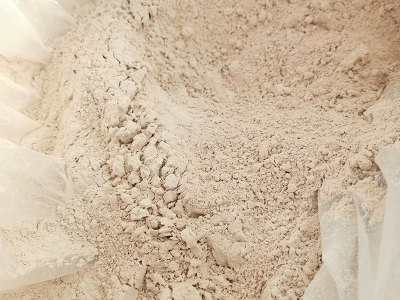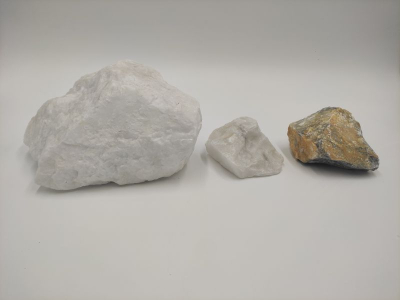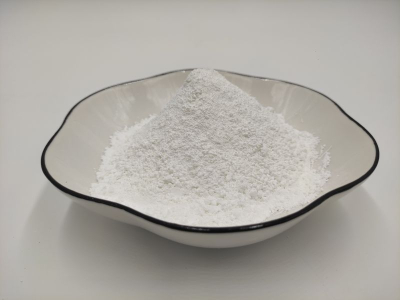Product Knowledge丨Talking about the production status and development trend of domestic precipitated barium sulfate
Product Knowledge丨Talking about the production status and development trend of domestic precipitated barium sulfate
soluble in hot sulfuric acid. It is easy to make mixed crystals with potassium permanganate, calcium carbonate or metal nitrate. It can be reduced to barium sulfide with carbon at high temperature. It is an important basic chemical raw material, mainly used as raw material or filler for paints, coatings, inks, plastics, rubber and batteries; surface coating agent for printing paper and coated paper; sizing agent for textile industry ; As a clarifying agent in glass products, it can play a role in defoaming and increasing gloss. It can also be used as a protective wall material for anti-radiation, and is also used in industries such as porcelain, enamel and dyes, and is also a raw material for the manufacture of other barium salts.
Most Chinese enterprises use this process, which has a relatively long process route, prominent environmental pollution, mature technology, and by-product industrial sodium sulfide. The produced precipitated barium sulfate has high whiteness. After mechanical pulverization and grinding, the maximum particle size is about 10μm, while the average particle size is about 1.2-1.3μm. The diffuse reflection is eliminated, so that the coating film is dull and the gloss is not high, which limits its use in high-grade paints and coatings. In addition, because barium sulfide is unstable in the air, it is easy to generate barium polysulfide, so the content of impurities in the generated precipitated barium sulfate is high, the mass fraction of barium sulfate is about 97%, and the content of free barium is high, sometimes due to the content of sulfur ions High to produce hydrogen sulfide smell (rotten egg smell).
1.2 Barium sulfide-sulfuric acid method
This process method is flexible and can be restored to Glauber's salt-sodium sulfate method at any time, with strong applicability. The whiteness of the produced precipitated barium sulfate is higher, the whiteness of building materials is above 97, the dispersibility is strong, and the stability between batches is good. It is mainly used for powder coatings and low-grade fillers in plastics. Due to the use of sulfuric acid, the production cost is high and the profit margin is small. However, due to the release of hydrogen sulfide in the production process, such manufacturers make full use of hydrogen sulfide to process products with higher added value as their profit value-added point.
Using hydrogen sulfide as raw material, many sulfides can be synthesized. For example, the agrochemical herbicide ethyl thiocarbamate is made from ethanethiol, which is synthesized from ethanol and hydrogen sulfide; The octyl thiocarbamate salt produced from octyl mercaptan is also a kind of insecticide with good selectivity and low toxicity. Methionine in the feed industry is a feed additive that strengthens feed nutrition and makes up for the balance of amino acids. It is produced from methyl mercaptan. Using lime milk to absorb hydrogen sulfide and synthesize it with calcium cyanamide solution to produce thiourea, which is a multifunctional chemical, from the synthesis of pharmaceutical products (fine chemical intermediates) to the textile, dye and paper industries, from plastics and From resin chemistry to metal processing and hydrometallurgy, thiourea has a wide range of uses in these markets. Of course, the Claus method can be used to produce sulfur, and its process is mainly realized by using incomplete combustion of hydrogen sulfide. This technology is very mature, and there are devices at home and abroad, and the recovery rate can reach more than 96%.
1.3 Barium carbonate-sulfuric acid method
The whiteness of precipitated barium sulfate produced by this process is high, the whiteness of building materials is above 98, less impurities, low free barium content, no hydrogen sulfide smell, easy to disperse, relatively narrow particle size distribution, high specific surface area, and high gloss coating can be obtained. membrane. Although the production cost is high, due to the high quality of the products produced by this method, the positioning in the market is high, and the profit is also considerable.
In addition, in addition to the above three methods for producing industrial precipitated barium sulfate, there is also a method to recover from salt sludge. In the process of salt water purification in the chlor-alkali industry, some manufacturers will use barium chloride to preliminarily treat the salt water to generate a large amount of salt mud, the main components of which are barium sulfate and calcium carbonate. Therefore, many small factories in China recycle the precipitated barium sulfate in salt sludge. The products have low quality, many impurities, uncontrollable particle size, unstable batches, low whiteness (generally below 94), and easy to yellow. However, in recent years, as China has increased its environmental protection efforts, chlor-alkali enterprises have also begun to pay attention to the recovery of barium sulfate in salt sludge, and strive to improve the quality of precipitated barium sulfate recovered from salt sludge.



